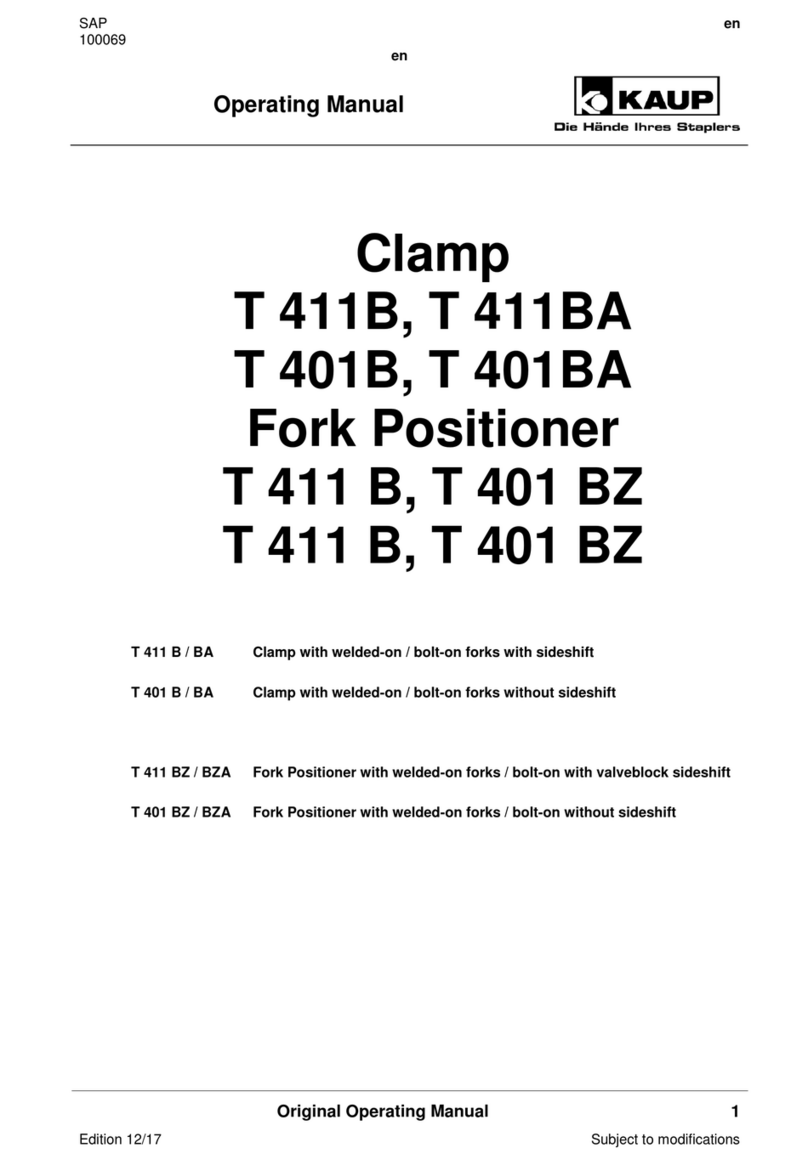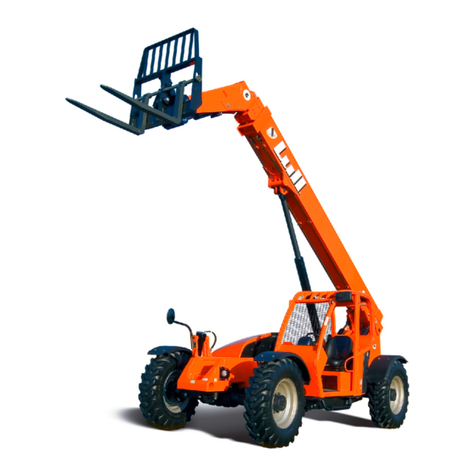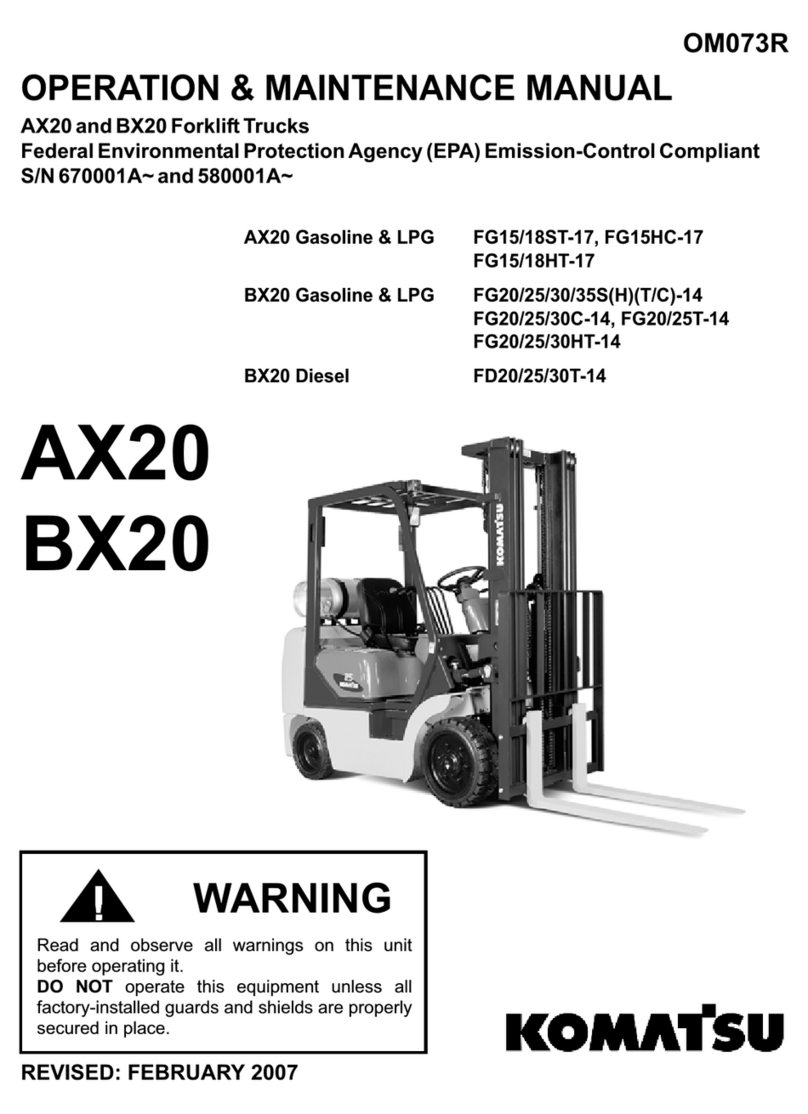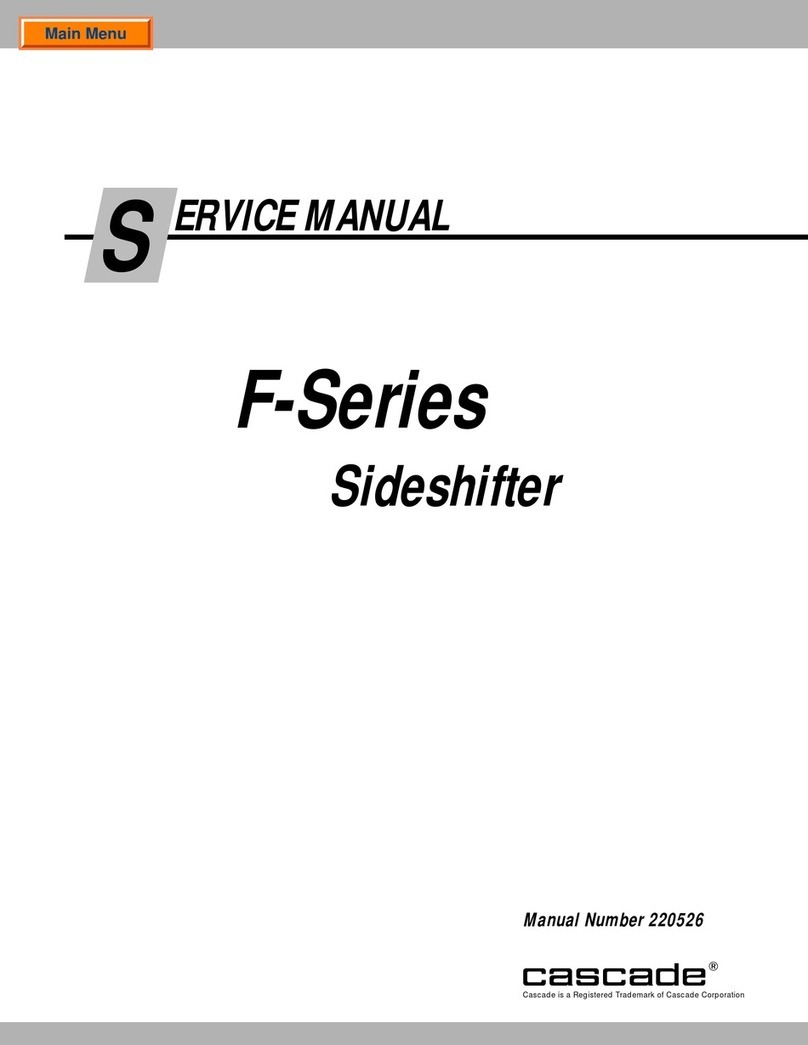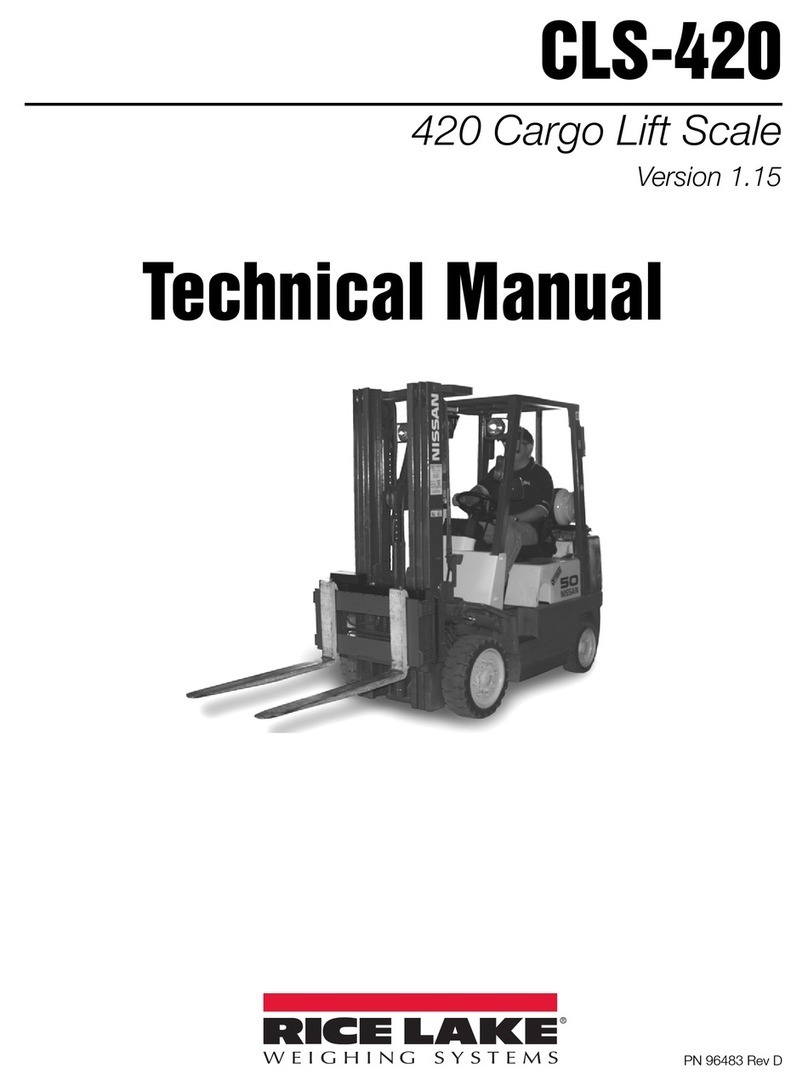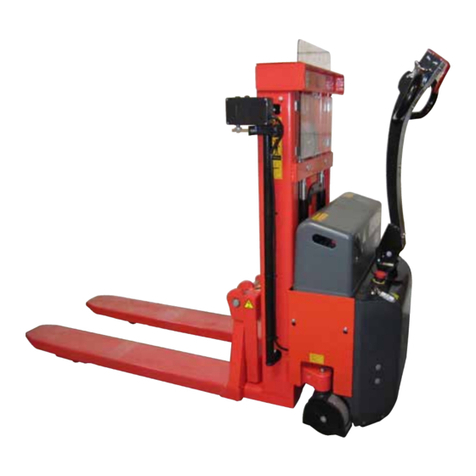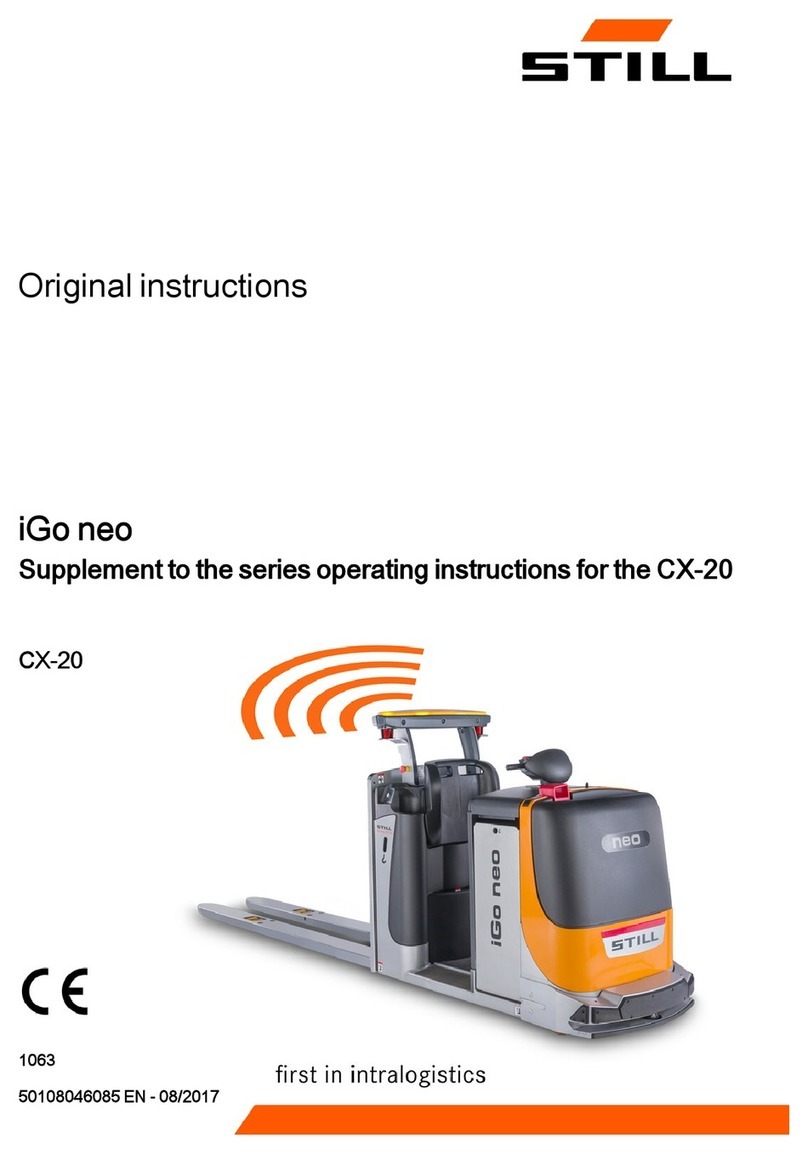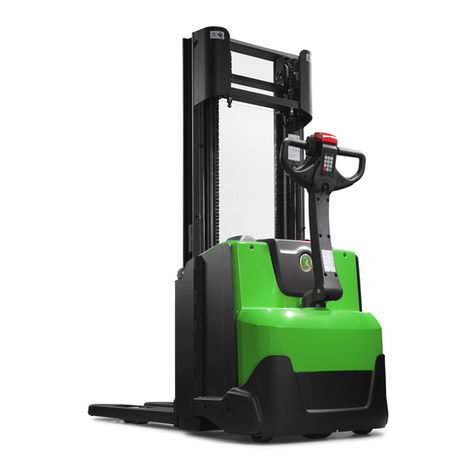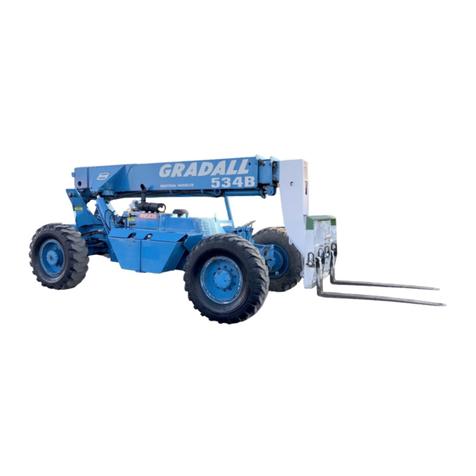Stark 58108 Original instruction manual

OWNER’S MANUAL AND SAFETY INSTRUCTIONS
WALKIE ELECTRIC TRUCK PALLET
ITEM # 58108
SAVE THIS MANUAL. KEEP THIS MANUAL FOR SAFETY WARNINGS, PRECAUTIONS, ASSEMBLY,
OPERATION, INSPECTION, MAINTENANCE AND CLEANING PROCEDURES. WRITE THE PRODUCT’S
SERIAL NUMBER ON THE BACK OF THE MANUAL, OR THE MONTH AND YEAR OF PURCHASE IF
PRODUCT HAS NO SERIAL NUMBER
FOR QUESTIONS, PLEASE CALL CUSTOMER SERVICE: 909.628.4900

SAFETY WARNINGS
Read all safety warnings and instructions. Failure to follow the warnings and
instructions may result in injury and/or property damage. Save all warnings
and instructions for future reference.
The warning and safety instructions in this manual are not meant to cover all possible conditions
and situations that may occur. Common sense, caution and care must be exercised when
operating or cleaning tools and equipment. Always contact your dealer, distributor, service
agent or manufacturer about problems or conditions you do not understand before operating
the product.
SAVE THESE WARNINGS.
1
• DO NOT operate pallet truck on inclined surfaces. It must be used on level surfaces only. Unanticipated
motion will occur as soon as the pallet truck lifts a load from surface.
• DO NOT overload the Pallet Truck beyond the load rating (3000lbs per unit).
• DO NOT start the vehicle’s engine, or drive with Jack in use. Jacks are designed for hand maneuvering
of vehicles only.
• DO NOT operate the pallet truck in temperatures above 104 °F or under 41 °F.
• DO NOTattempt to push the pallet truck over obstacles. They are designed to be used on level and
reasonable smooth surfaces only.
•During operation and lifting, the load must be centered on the pallet jack.
•Operating altitude should not exceed 1200 meters.
•DO NOT operate the pallet truck in corrosive environments such as near ammable and/or explosives.
•This is a tramp type electric pallet truck with autonomous control, lifting and lowering that is controlled
by the handle button. Improper operation of the pallet truck can damage the machine.
•Lifting or carrying people is strictly prohibitied.
• DO NOT use the pallet truck for anything other than the purposes set forth by the manufacturer.
• DO NOT modify or alter the pallet jack.
•DO NOT use the pallet truck on lifting or loading ramps.
•Make sure there is adequate lighting when operating the pallet truck.
•DO NOToperate the machine beyong the rated capacity. Read all labels and nameplates before
operating the machine.

SAFETY WARNINGS PRODUCT INFORMATION
SAVE THESE WARNINGS.
1 2

PRODUCT INFORMATION
3
PARTS INFORMATION / OPERATION

HANDLEBAR ASSEMBLY
Lifting point
STEP 1: Use a lifting machine to lift the car from the packing box an place it in position.
Note: Pay attention to the lifting point (shown above). In order to avoid scratches, a mat should
be placed on the ground, under the unit.
4

5
STEP 2: Take out the handle assembly, battery and manual from the box.

6
STEP 3: Use the tooling to disassemble the elastic cylindrical pin and small shaft (see the
red arrows in the picture above) and set them aside for later use.

7
STEP 4: Put the handlebar assembly into the handle seat. Then insert the chain into the
small hole at the end of the handle and clamp the bolt at the bottom end of the chain into
the U-shaped part of the lowering pedal. Then put the small shaft into the fixing hole and
install the cylindrical pin.

8
STEP 5: After removing the screws on the left side of the motor cover, assemble the
wires on the handle and the other end under the motor cover. Install the motor cover in
place and fix it with screws. Insert the battery into the battery slot, then after the
connection is complete, turn on the key switch and turn it on.

PARTS INFORMATION / OPERATION
9
1. Falling Knob 2. Driving Button 3. Lifting Button 4. Emergency Reverse 5. Horn 6. Electricity Meter
7. Falling Button 8. Slow Speed Button
BRAKING
• Turn the travel switch (2) to "0" position or release the switch to make the truck brake until it stops.
• With the driving switch (2) moving directly from one driving direction to the opposite direction, the vehicle
regenerates the brake until it begins to move in the opposite direction.
• The handle moves up and down to the braking area (' B ') and the truck brakes. If the handle is released, the
handle automatically moves to the upper braking area (' B ') and the truck start braking until it stops.
• Emergency Reverse button (4) can prevent the operator will be squeezed, when the truck is facing an
obstacle in forward direction. The body touch Emergency reverse button and the truck de-accelerates or
starts to move to (BW) for a distance and then stops. If the handle is in the operating area and the truck is not
moving, please consider that this button is still working.

OPERATION
The main working body of a moving truck is the fork, which relies on a fork to carry the pallet or cargo for
transport and short distance transportation.The expansion of the cylinder is realized by the control of the
operating handle, and the pressure oil is provided by the pumping station.
ELECTRICAL SYSTEM
• Turn the travel switch (2) to "0" position or release the switch to make the truck brake until it stops.
• With the driving switch (2) moving directly from one driving direction to the opposite direction, the vehicle
regenerates the brake until it begins to move in the opposite direction.
• The handle moves up and down to the braking area (' B ') and the truck brakes. If the handle is released, the
handle automatically moves to the upper braking area (' B ') and the truck start braking until it stops.
• Emergency Reverse button (4) can prevent the operator will be squeezed, when the truck is facing an
obstacle in forward direction. The body touch Emergency reverse button and the truck de-accelerates or
starts to move to (BW) for a distance and then stops. If the handle is in the operating area and the truck is not
moving, please consider that this button is still working.
HYDRAULIC SYSTEM
The oil pump motor drives the gear pump to provide hydraulic power. Lifting oil cylinder is responsible of fork’s
lifting and lowering. The control of the lift oil road is controlled by the buttons on the operating handle. The
lifting action is controlled by a single action oil circuit on the valve block. This model of the hydraulic system
pressure can only be adjusted on the valve block.
10

ELECTRICAL SCHEMATIC DIAGRAM
ELECTRICAL SCHEMATIC
HYDRAULIC SCHEMATIC
3
11

OPERATION
12
To Start: Plug in the lithium battery interface. Then open the electric lock.
Lifting and Lowering: To lift, use the button on the handle. To lower, hold the drop knob.
Driving: Rotate the handle to the driving range. A and C is brake range. B is driving range. Slowly rotate the
accelerator to start the truck. Do not accelerate to rapidly.

OPERATION
3
13
Braking: When the accelerator is released normally, the truck will stop until the brake is held in the car through
the regenerative braking of the motor. When emergency braking, the operating handle is quickly turned to
zone A or area C (gure 9), and the brake is carried to the death to realize the emergency braking function.
Parking: Release the acceleration button to stop the moving truck and slow down the truck until the brakes
are on. Lower the fork to the lowest position. Turn o the electric lock.
Emergency Reverse Function: The red button at the end of the handle is the emergency reverse button.
When the body is in contact with the emergency reverse button, the truck will stop immediately and drive
backward for a distance. This is a safety switch designed to prevent the vehicle from being crushed when the
operator encounters an obstacle.
Horn and Reversing Horn: In order to drive safely, the truck is equipped with a driving horn. To remind others
when driving, press the horn button in the middle of the handle, and the horn will ring to warn pedestrians.
Battery Capacity Display: This is located on the dashboard of the truck.
Operation: slowly drive the truck to the items to be transported, insert the pallet fork and move forward slowly,
when the goods completely inserted into the goods after parking, control handle upgrade button, the heavy
lifting to a certain height, back slowly, don’t touch the adjacent goods, when the weight zone is put out the
goods, and then walk handling. When moving the goods close to the area of the goods, it will slow down.
When the moving truck is in a straight line with the goods, then the moving truck will slowly move forward to
the loading area to stop. Slowly press the lower lever, and once the load is held, the fork will be lowered to
the hollow position. When the fork is pulled out of the weight, the back position will be conrmed without any
obstacle. Wait for the fork to leave the weight completely before carrying on a round of handling.

MAINTENANCE
14
3
Cleaning Operation: Flammable liquid can not be used for cleaning the stacker. Before cleaning, take safety
precautions to prevent electric sparks (e.g. sparks caused by short circuit). When operating the accumulator,
connectors on it must be disconnected. Use soft air suction or compressed air, non-conductive and anti-static
brushes to clean electric and electronic components.
Operation of Electric System: Operation on the electric system should only be performed by specially trained
personnel. Before performing any operation on the electric system, precautions must be made to prevent elec-
tric shock. When operating the accumulator, connectors on it must be disconnected.
Wheels: Quality of the wheels has signicant eect on stability and driving performance of the truck. Modica-
tion on wheels can be performed only with the approval from the manufacturer. When replacing wheels, ensure
that the truck is levelled as delivery state (wheels must be replaced in pairs, i.e. replace right wheel together with
left one).
Hydraulic oil pipe: The oil pipe must be changed every 6 years. When change the hydraulic assembled parts,
the oil pipe should be also changed.
Routine Maintenance
1. Check the condition of each pole, cable and protective cover of the accumulator.
2. Check whether the battery box is secure.
3. Check whether the truck is oiled.
4. Check the situation of fork, oil pipe and horn.
5. Check the braking condition.
6. Check the wear condition of driving wheel, load wheel and so on.
Maintenance periods listed in this manual apply to single shift a day under normal operation conditions. If using
in dusty environment, the ambient temperature varies remarkably or in multi-shift situation, the maintenance
period has to be shortened.
Maintain the truck according to following maintenance list. Maintenance periods are as follows:
W1 = Every 50 work hours, but at least once a week.
M3 = Every 250 work hours, but at least once every three months
M6 = Every 500 work hours, but at least once every six months
M12 = Every 2000 work hours, but at least once every 12 months
Additional operations should be performed in trial run period:
(In initial 50 – 100 working hours or after two months)
• Check the nuts on the wheels, and tighten them if necessary.
• Check the hydraulic components for leakage, and tighten them if necessary.
• Replace the hydraulic lter.

MAINTENANCE
15

MAINTENANCE
16 3
BATTERY MAINTENANCE, CHARGING AND MAINTENANCE.
Any operation of the battery must be guaranteed to stop the truck and put it in a safe position.
MAINTENANCE PERSONNEL.
Battery charging, maintenance and replacement must be operated by qualied professionals. You must carefully
read the manual, supply preparation and charging requirements before preparing for the operation.
FIRE PROTECTION MEASURES.
Smoking and open re are strictly prohibited when operating the battery. Storage battery and charge must be
kept away from combustible materials, at least 2 meters above the distance, the place of storage battery must
be well ventilated and equipped with re-ghting facilities.
BATTERY TYPE AND USAGE NOTE.
1. the battery type of the car is: lithium-ion battery; Battery voltage 24V/48V; This battery belongs to environmental
protection battery, without chemical mercury and cadmium.
2. Matters needing attention:
A) the battery USES the temperature environment 5 ~ 45.
B) the battery shall be charged and discharged once every three months during the long period of suspension.
C) before using the new battery, or for the rst time after storage, please recharge the battery before use.
D) do not short-circuit the battery, which may permanently damage the battery.
E) do not burn or destroy batteries, which may cause the release or explosion of toxic gases.
F) do not directly weld the battery.
G) do not allow the battery to be in a hostile environment, such as extreme temperature, deep cycle, or frequent
overcharge/discharge.
H) if the battery is hot, do not touch, until cooling
I) when removing the battery pack, hold the plug with your hand instead of pulling the cord;
J) after the battery is used, if the battery is hot and before recharging, please cool in the ventilated environment;
K) do not put batteries in water or seawater;
L) do not try to separate, squeeze, impact the battery, the battery will heat or re, the lye in the battery will be
harmful to the skin and eyes, and will damage the clothes.
M) keep the battery away from children.
DISPOSAL OF USED BATTERIES
Scrap battery must be carried out in accordance with the relevant laws and regulations in region recycling,
storage provisions stipulated by the environmental protection area or waste treatment area, and the work must
be conducted by qualied professional company

MAINTENANCE
17
Uninsulated terminal poles on the accumulator should be protected with an insulated cover. When connecting
the accumulator and socket, make sure to stop the device and put the switch at position “0”. When replace or
install the accumulator, make sure the accumulator is xed securely in battery box.
STORAGE, TRANSPORTATION, AND INSTALLATION OF THE ACCUMULATOR
The device must be parked on the level ground steadily. To prevent short circuit, naked cable ends, and the
terminal posts should be covered with insulated covers. When pulling out the accumulator, properly arrange
removed accumulator’s connectors and cables without blocking access of the accumulator.
BATTERY POWER INDICATOR
Battery power display table: ten articles showing represent 100% of the battery.
With the consumption of battery capacity, the glowing article shows will be from top to down.
The color of LED show the dierent states:
Battery discharge on 70%, red lamp will be
blinking “Energy storage”.
Battery discharge on 80%, two lamps will
blinking “out of battery”, this indicates you
need to charge the accumulator.
CHARGING
Read the instruction manual carefully before recharging.
a) Must use Li-ion Charger specially designed by our company
b) Do not reverse charge the battery
c) Stop charging immediately when battery has obvious heat
during charging. Then cool it before charging
d) Please hold the handle when pulling charger connector,
direct drawing of wire is not allowed
DISASSEMBLY AND INSTALLATION OF BATTERY
Parking the truck before the battery is removed and installed
Disassembly & Installation battery step:
A) Turn o the car
B) Pull the power connector handle and unplug the power
connector(Attention: When pulling the power connector, Must
hold the handle. Please do not pull the wire directly
C) Pull up the battery and pull the battery out of the car
D) Insert the new battery into the battery mounting slot

4
MAINTENANCE
18

BODY ASSEMBLY
19
Table of contents
